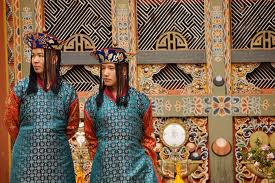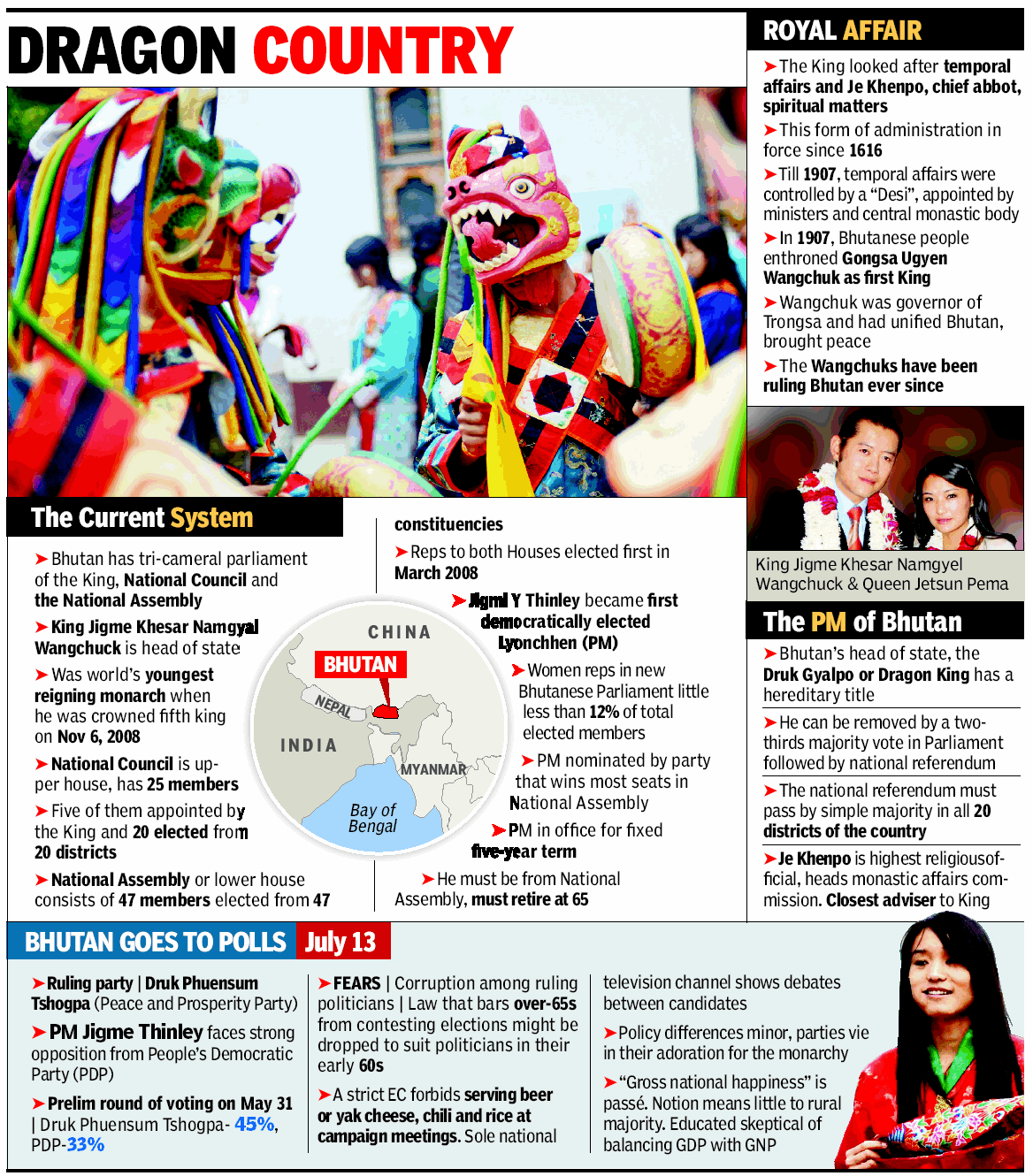Bhutan: Government
This is a collection of articles archived for the excellence of their content. Readers can send additional information, corrections, photographs and even Readers will be able to edit existing articles and post new articles directly |

Contents |
BHUTAN’S THREE GIANT LEAPS
FIRST BIG REFORM
Third King Jigme Dorji Wangchuk set up National Assembly (Tshogdu) in 1953
It elected members representing Gewogs (smallest administrative units)
This was legislating body, people discussed national issues
SECOND BIG REFORM
Setting up of Royal Advisory Council (Lodoe Tshogde) in 1963
Served as link between king, council of ministers and people
Liaison ensured projects’ timely implementation King Jigme Singye Wangchuk set up District Development Committee in 1981 (Dzongkhag Yargay Tshogdue)
In 1991, he set up Gewog Yargay Tshogchhung (block development committees)
THIRD BIG REFORM
The 1998 devolution of powers to cabinet ministers
King became head of state while PM head of govt
PM has council of ministers
Constitution signed in 2008
The National Assembly
The National Assembly has 47 members. A party that wins 24 seats or more can form the government.
2008: the first parliamentary elections
The Druk Phuensum Tshogpa (DPT) won the elections. The People's Democratic Party (PDP) got just two of the 47 seats. The DPT, with 45 legislators, ruled the country for five years with Mr. Jigmi Y Thinley as the prime minister.
2013: the second parliamentary elections
PTI | Jul 13, 2013 [1]
People's Democratic Party (PDP) won 31 seats while ruling Druk Phuensum Tshogpa (DPT) got 14 seats in the 47-member National Assembly
The peaceful elections were marked by a heavy voter turnout of 80 per cent.
India provided logistical support, including gifting nearly 4,130 Electronic Voting Machines (EVMs) to Bhutan
2013: the main poll issues
The voting took place in July 2013. Less than two weeks before votes were cast, an India cut off the kerosene and cooking gas subsidy to Bhutan since a pact with the country had expired on June 30. This became a major campaign issue.
During the campaigning, the rival parties tried to impress upon people that concerns like India's withdrawal of subsidy on would be resolved once they form the government.
Ahead of the elections, PDP general secretary Sonam Jatsho said, "Indo-Bhutan relations are so strong that you cannot imagine that it can be harmed due to some minor issues".
On its part, India assured Bhutan that it will not make it "suffer" and will proceed on the issue of gas and kerosene subsidy in "full consultation" with the new government there. At the same time, India maintained that "careful accounting" was required to ensure proper usage of the subsidy.
The system of governance: a chart
The Times of India 11/7/2013
See also
Bhutan: Government
